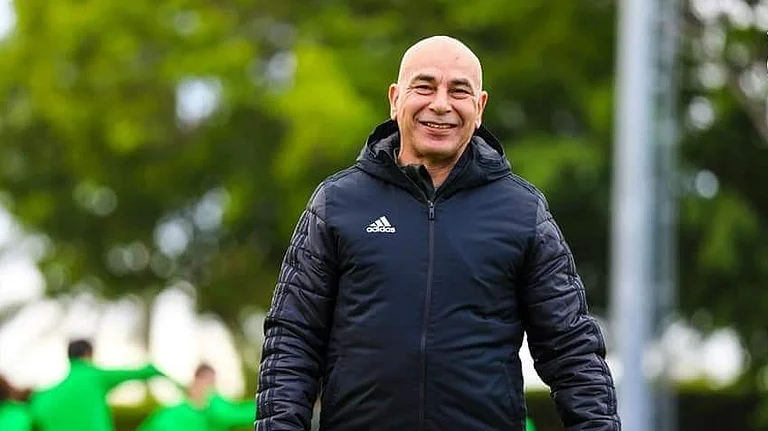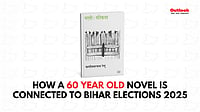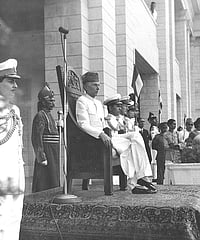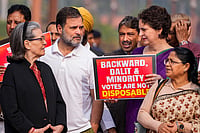
Not Quite Floored
My week began with dinner on a rooftop terrace in one of south Bombay’s last surviving conservation areas. When I admired his enviable view, my host—a committed free marketeer—launched into a tirade against “environmental Tories”, who are reining in Bombay’s FSI limits, the ratio between built-up floor space and the size of a plot. The purpose of FSI was to ensure that new buildings leave enough space for social and environmental amenities and essential infrastructure like sewage, water and electricity. Bombay already has one of the world’s most overcrowded rates of occupancy per square metre, more than 10 times Manhattan’s. The official FSI limits have been widely disregarded by private builders in cahoots with corrupt municipal officers and corporators. The result is the congested concrete jungle that has replaced the carefully planned, wide avenues, lush parks and gracious buildings that once made colonial Bombay a rival to the imperial metropolis in London.
My friend’s logic was that unrestricted high-rise building would bring down Bombay’s crazy property prices and relieve the shortage of housing for slum-dwellers. It was a view exploded by the veteran architect, Charles Correa, in an eloquent talk he gave at the Times of India Literary Carnival. Correa, with some powerful statistics, demonstrated that FSI increases would be catastrophic for Bombay’s quality of life, obliterating its last remaining open spaces and repeating the mistakes of urban planners in overbuilt cities like Manhattan and Hong Kong. But will such wisdom prevail against the greed of unrestrained market forces?
And the Tide Came In
A major factor is the collapse of decent municipal governance. I’m reminded of my grandfather, Sir Rustom Masani, Bombay’s first Indian municipal commissioner in the 1920s. In those days, the Bombay Municipal Corporation was run by highly distinguished corporators, nominated from among the predominantly Parsi city fathers who had built the city, working closely with British architects and town planners. But then along came democracy, with elections first introduced for local government. With it came votebanks, slums, money power and the kind of municipal corruption we now take for granted. Rather than submit to the new regime, Grandfather very sensibly resigned as municipal commissioner and turned to running Bombay University instead.
Bach in Bombay
Although the British left behind superb urban infrastructure, one area where they failed abysmally was the promotion of cultural and artistic creativity. Unlike the Russians or the Portuguese in their colonial empires, the Raj did nothing to create musical conservatories or orchestras, rather looking down on such pursuits as a bit ‘namby-pamby’. Growing up here in the 1950s, I was acutely aware that the flame of Western classical music was being kept alive by a tiny band of dedicated, mostly expat, music teachers.
Now that I’m researching a radio documentary for the BBC on Bombay’s newly thriving Western music scene, I’m amazed at the enthusiasm of new audiences, no longer confined to westernised Parsis and Goans. It’s a demand commercially encouraged by Bollywood, which now requires far more Western-trained musicians for its soundtracks. Furtados, the Goan-owned Bombay music shop set up in 1865, is selling more pianos and other Western musical instruments than ever before.
What’s even more encouraging is that charities like the Mehli Mehta Foundation are taking music teaching out into even the municipal and regional language-medium schools and trying to reach children from less affluent backgrounds. The foundation was sponsored by Zubin Mehta in memory of his father, who struggled to make a career as a violinist in 1930s Bombay.
Eighty years later, the NCPA can boast of being the base for India’s first professional symphony orchestra, even though its musicians are still predominantly imports from abroad. The challenge now is to train a new generation of Indian professional musicians; but in marked contrast with China, there is hardly any state subsidy in India for our own classical music, let alone that of the West.
Wind in Our Sales
Back at the TOI book fest, I was struck by the enthusiastic crowds of all ages who packed the halls to hear us talk about our books. Celebrities like Hanif Kureishi, Ramachandra Guha and Ruskin Bond were a particularly big draw, but even a humble, freelance historian like myself, talking about the boundaries of historical writing, got a full audience and lots of lively questions. With book festivals spreading to virtually every Indian city, I’m hoping that their popularity will translate into larger sales for us writers of serious non-fiction.
I remember my father telling me......
How he used to play second fiddle to Mehli Mehta’s first violin in what was then Bombay’s first string quartet, made up mostly of amateurs.
Historian and broadcaster Zareer Masani is author of Macaulay: Pioneer of India’s Modernisation; E-mail your diarist: zareer@masani18.freeserve.co.uk























